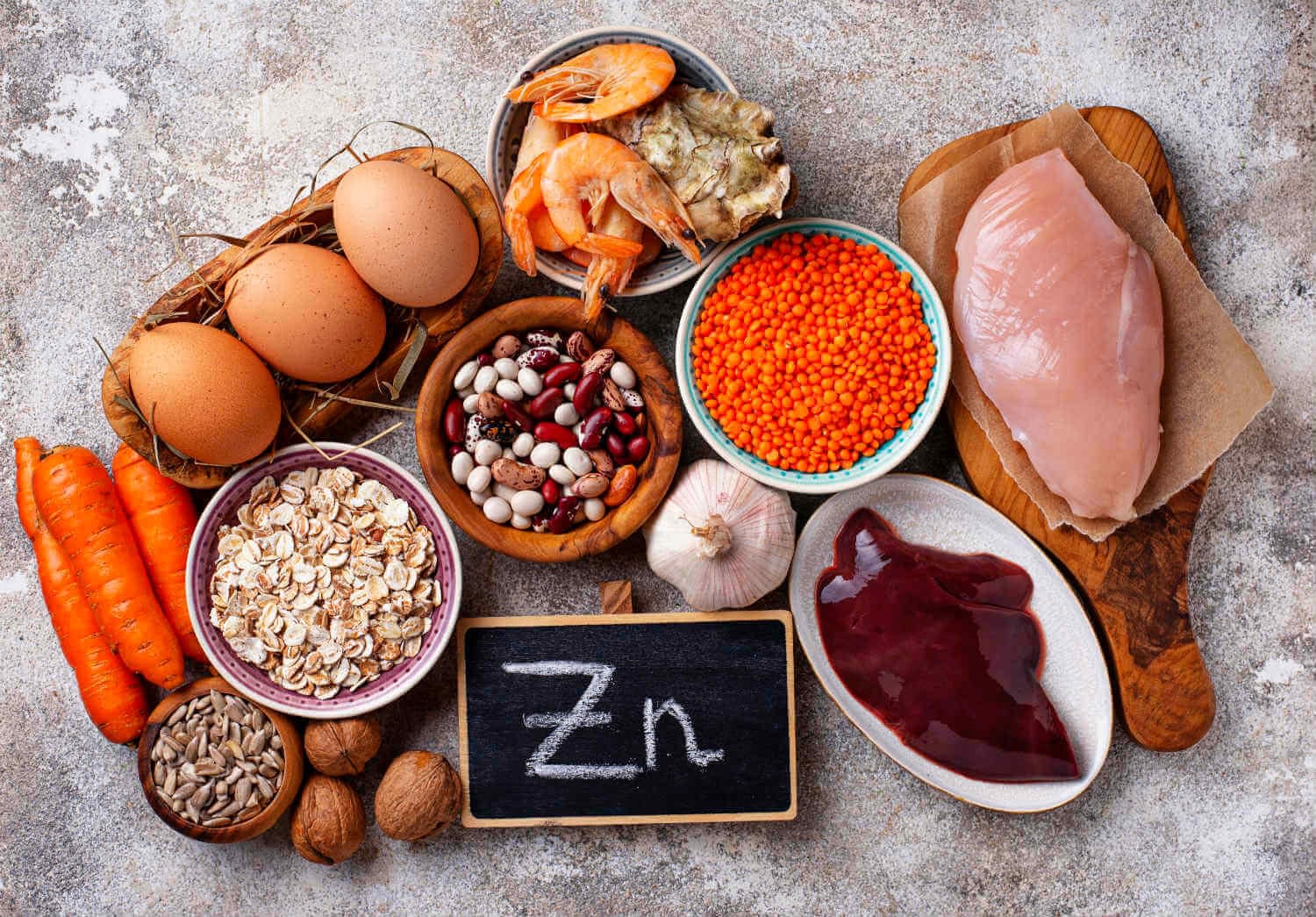If you are looking for A List of the Top 10 Foods Rich in Zinc you've came to the right place

A List of the Top 10 Foods Rich in Zinc
Introduction:
Zinc is an essential trace mineral that plays a vital role in maintaining overall health and wellness. It is involved in numerous bodily functions such as immune function, wound healing, and protein synthesis. While a minor deficiency of Zinc can lead to growth retardation, impaired immune function, and cognitive dysfunction, excessive Zinc intake can cause toxicity, leading to problems such as nausea, vomiting, and diarrhea. Therefore, getting the right amount of Zinc daily is crucial. In this article, we'll take a look at the top 10 Zinc-rich foods that you can easily incorporate into your diet.
Zinc-rich Foods:
1. Oysters:
Oysters are rich in Zinc, providing up to 385% of the daily recommended value per 3.5 ounces. This shellfish is an excellent source of high-quality protein and other nutrients such as iron, copper, and vitamin B12. Incorporating fresh oysters into your diet might be a bit challenging as they are not widely available and can be quite expensive. Canned oysters, however, are a relatively affordable option and can be found in most grocery stores.
2. Red Meat:
Red meat such as beef, pork, and lamb is another excellent source of Zinc. These meats provide around 18-30% of the daily recommended value per 3.5 ounces. However, it is important to choose lean cuts and consume them in moderation as high consumption of red meat has been associated with an increased risk of heart disease and certain cancers.
3. Shellfish:
Apart from oysters, other shellfish such as crab, lobster, and shrimp are also great sources of Zinc. Crab provides up to 43% of the daily recommended value per 3.5 ounces, while lobster and shrimp provide 7% and 9%, respectively. These shellfish are low in fat and calories, making them an excellent addition to a healthy diet.
4. Legumes:
Legumes such as beans, lentils, and chickpeas are Zinc-rich and provide about 5-10% of the daily recommended value per 3.5 ounces. They are also high in fiber, protein, and various other essential nutrients making them an excellent source of plant-based protein for vegetarians and vegans. Legumes are versatile and can be incorporated into a wide variety of dishes like salads, soups, and stews.
5. Seeds:
Seeds such as pumpkin seeds, hemp seeds, and flax seeds are rich in Zinc and provide about 20-23% of the daily recommended value per 3.5 ounces. They are also excellent sources of healthy fats, fiber, and protein. Pumpkin seeds are a tasty and convenient snack, while hemp and flax seeds can be added to smoothies, salads, and baked goods.
6. Nuts:
Nuts such as cashews, almonds, and peanuts are Zinc-rich and provide around 6-16% of the daily recommended value per 3.5 ounces. They are also high in healthy fats, fiber, and protein and are an excellent addition to a balanced diet. Nuts can be enjoyed as a snack or added to breakfast cereals, smoothies, and baked goods.
7. Dairy:
Dairy products such as cheese and milk are significant sources of Zinc. Cheese provides around 28% of the daily recommended value per 3.5 ounces, while milk provides about 4%. Dairy products are also rich in other essential nutrients such as calcium and vitamin D, making them a vital part of a healthy diet.
8. Whole Grains:
Whole grains such as brown rice, quinoa, and oats are Zinc-rich and provide around 6-12% of the daily recommended value per 3.5 ounces. They are also high in fiber, vitamins, and minerals, making them an excellent addition to a balanced diet. Whole grains can be used in a variety of dishes like stir-fries, salads, and soups.
9. Vegetables:
Certain vegetables such as mushrooms, spinach, and asparagus contain significant amounts of Zinc. Spinach provides around 4% of the daily recommended value per 3.5 ounces, while mushrooms provide around 5%. These vegetables are also high in fiber, vitamins, and minerals, making them a vital part of a healthy diet.
10. Dark Chocolate:
Dark chocolate is not only delicious but also a good source of Zinc. It provides around 10% of the daily recommended value per 3.5 ounces and is also rich in other essential nutrients such as iron, magnesium, and antioxidants. However, it is important to consume dark chocolate in moderation as it is also high in calories and fat.
Kualifikasi:
Getting enough Zinc is crucial for maintaining overall health and wellness. The recommended daily intake of Zinc varies by age and gender. For the average adult male, the recommended daily intake is 11 mg/day, while for adult females, it is 8 mg/day. However, pregnant and breastfeeding women may require up to 12-13 mg/day due to the increased Zinc demand. It is also important to note that Zinc absorption can be affected by various factors such as phytates found in whole grains and legumes, which can bind to Zinc and reduce its absorption. Therefore, consuming Zinc-rich foods in combination with foods that are not high in phytates can increase Zinc absorption. Excessive Zinc intake can lead to toxicity, causing problems such as nausea, vomiting, and diarrhea. However, Zinc toxicity is rare and is more commonly associated with high-dose supplements than with dietary intake. Therefore, it is generally safe to obtain Zinc from food sources.
Conclusion:
Incorporating Zinc-rich foods into your diet is an easy way to maintain overall health and wellness. Oysters, red meat, shellfish, legumes, seeds, nuts, dairy, whole grains, vegetables, and dark chocolate are all excellent sources of Zinc. Consuming a variety of Zinc-rich foods can help ensure that you are getting the right amount of Zinc daily. However, it is important to consume Zinc in moderation and in combination with other foods to ensure optimal absorption.


Post a Comment